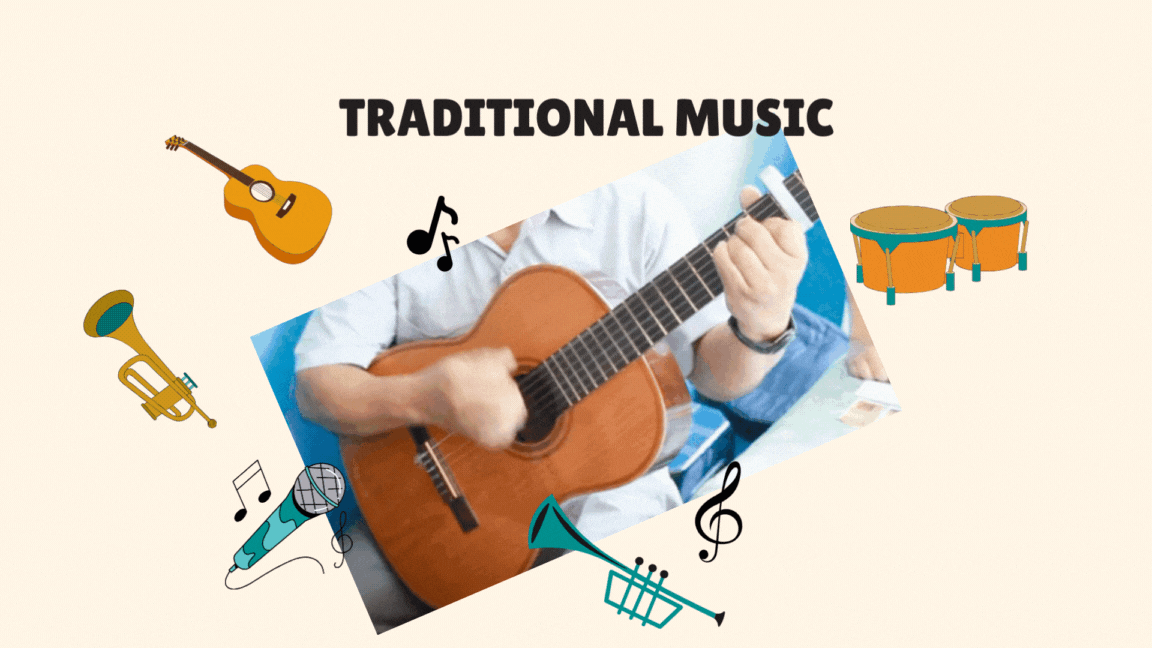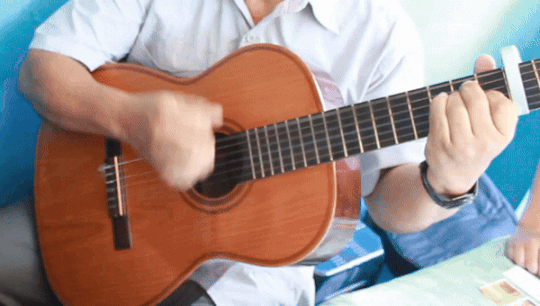It is likely that traditional music has reached our ears from a very early age, since it is present in several educational systems, in the form of subjects or cultural activities. However, it is up to each individual to decide whether he or she develops a taste for it and whether he or she will continue to listen to it. What do I think of the traditional music of the region where I live? Do I like it? I invite you to stay to find out the answers.

The little I know about traditional music is enough to know that there are many musical styles within the national territory. For example, of the most well known we can mention the llanera music and the joropo. However, some areas accentuate their own genre, such as the gaita zuliana, the galerón, the tambor in the beach area, the calipso, and others.
The instruments are also very varied. The best known are the cuatro, harp and maracas. But depending on the music, you can add the guitar, the drum, the requinto, the furruco, and others. These are just the ones I know. I'm sure there are more and I don't even know they exist.
In many cases, people like to listen to this type of traditional music in the mornings, because many of its lyrics talk about nature, animals, life, love, etc. Some say that it gives them a good feeling to be able to watch the sunrise while driving or doing the first activities of the day while listening to this kind of songs.

Do I like all this traditional music? The truth is that it is not among my favorite genres. I have no problem listening to it live or recorded. I think what attracts me the least are the lyrics, maybe because I don't know more about the culture of those sectors. But several of these songs are definitely unpleasant, because despite wanting to present them in a humorous way, they have explicit language about bad actions, behaviors and thoughts. Everyone can choose how to be entertained, but at least I choose not to do it with these things.
Another case is the genre called "contrapunteo". It consists of two people taking turns interacting with each other while the music plays. But what they say to each other is insults, mockery and the like, disguised in rhymes, rhetorical figures, simple comparisons and very expressive body language. Again, everyone entertains himself as he wants, but I don't see much difference between that content and the heavy metal that I heard a lot of in my adolescence. The latter was condemned, but not the former. Well, maybe it's still whimsy or youthful pride.
But then again, I like to listen to some bagpipes, llaneras, drums and the like, selecting the songs and their lyrics, if it is in my power. In fact, I have no problem going to singing and music competitions that come up in my area for kids to show off their musical and vocal talents.
All in all, I can see that traditional music is on the decline. Fewer and fewer people are listening to it and learning it. Other genres have taken over the territory in homes, making it less and less appealing to the new generations. That is a clear example of how foreign music has influenced this issue. But there have been other slightly stranger influences that I saw a few years ago.
When the legal framework regulating radio stations was updated, one of the things they wanted to increase was the time in which radio stations broadcast traditional music. In their eagerness to still be commercial and attractive, remixes and combinations of traditional songs began to appear. To my taste, that mix most of the time did not turn out well. It sounded strange and not so appealing. In more recent times I think this idea has diminished a bit.

I commend those parents who do encourage their children to learn to play these instruments at a young age. I wish I had learned that in my youth. I believe it can enhance a child's gifts as well as perpetuate the sounds of a region. In the meantime, I will continue to enjoy those who know and have no problem playing their instruments at social gatherings. I will also continue to listen to those songs that I find enjoyable with the more familiar traditional bands and instruments. Again, it's a matter of selection and taste - see you next time!



Es probable que la música tradicional haya llegado a nuestros oídos desde muy temprana edad, puesto que está presente en varios sistemas educativos, en forma de asignaturas o actividades culturales. Sin embargo, cada uno elige posteriormente si desarrolla un gusto por ella y si seguirá escuchándola. ¿Qué opino de la música tradicional de la región donde vivo? ¿Me gusta? Te invito a quedarte para conocer las respuestas.

Lo poco que conozco de música tradicional es suficiente para saber de que hay muchos estilos musicales dentro del territorio nacional. Por ejemplo, de los más conocidos podemos mencionar la música llanera y el joropo. Sin embargo, en algunas zonas se acentúa su propio género, tal como la gaita zuliana, el galerón, el tambor en la zona playera, el calipso, y otros.
Los instrumentos también son muy variados. De los más conocidos son el cuatro, arpa y maracas. Pero dependiendo de la música, se le puede agregar la guitarra, el tambor, el requinto, el furruco, y otros. Todos esos apenas son los que conozco. Estoy seguro que hay más y que ni yo sé que existen.
En la muchos casos, a las personas le gusta escuchar éste tipo de música tradicional en las mañanas, porque muchas de sus letras hablan sobre la naturaleza, los animales, la vida, el amor, etc. Algunos dicen que les da buena sensación poder ver el amanecer mientras manejan o desarrollan las primeras actividades del día a la vez que escuchan éste tipo de canciones.

¿Me gusta toda esa música tradicional? La verdad es que no está dentro de mis géneros favoritos. No tengo problema en escucharla en vivo o grabada. Creo que lo que menos me atrae son las letras, tal vez porque me falta conocer más de las cultura de esos sectores. Pero varias de esas canciones definitivamente son desagradables, porque a pesar de querer presentarlas de forma jocosa, tienen lenguaje explicito sobre malas acciones, conductas y pensamientos. Cada quien puede elegir cómo entretenerse, pero al menos yo elijo no hacerlo con éstas cosas.
Otro caso es el género llamado "contrapunteo". Consiste en que dos personas interactúen por turnos mientras la música suena. Pero lo que se dicen el uno al otro es insultos, burlas y cosas parecidas, disfrazadas entre rimas, figuras retóricas, comparaciones sencillas y lenguaje corporal muy expresivo. De nuevo, cada quien se entretiene como quiera, pero no le veo mucha diferencia entre ese contenido y el de heavy metal que mucho llegó a mis oídos en mi adolescencia. Se condenaba lo segundo, pero no el primero. Bueno, quizás aún sea capricho u orgullo juvenil.
Pero de nuevo, me gusta escuchar algunas gaitas, llaneras, tambores y cosas por el estilo, seleccionando las canciones y su letra, si está en mi poder. De hecho, no tengo problemas en acudir a competencias de canto y música que se presentan en mi zona para que los niños demuestren sus talentos musicales y vocales.
Con todo, puedo ver que la música tradicional va en decadencia. Cada vez menos personas la escuchan y la aprenden. Otros géneros han ocupado el territorio en los hogares, haciendo que sea cada vez menos atrayente para las nuevas generaciones. Esa es un ejemplo claro de cómo la música extranjera ha influido en éste tema. Pero han habido otras influencias un poco más extrañas que vi hace unos años atrás.
Cuando el marco jurídico que regulaba las emisoras fue actualizado, una de las cosas que se quiso incrementar era el tiempo en el que la radio transmitía música tradicional. En su afán por aún ser comercial y atractivo, empezaron a aparecer remixes y combinaciones de canciones tradicionales. A mi gusto, esa mezcla la mayoría de las veces no quedó bien. Resultaba extraño el sonido y no tan atractivo. En tiempos más recientes creo que esta idea ha disminuido un poco.

Alabo a aquellos padres que sí promueven que sus hijos aprendan a tocar éstos instrumentos desde joven. Quisiera haber aprendido éso en mi juventud. Creo que eso puede hacer que se potencien los dones del niño a la vez que puede perpetuar los sonidos de una región. Mientras tanto, seguiré disfrutando de aquellos que saben y no tienen problema en tocar sus instrumentos en reuniones sociales. También seguiré escuchando esas canciones que me resultan agradables con las bandas e instrumentos tradicionales más conocidos. De nuevo, es cuestión de selección y gustos. ¡Hasta la próxima!
🎶

FUENTES / SOURCES
Cover: Made with the free version of CANVAS || Portada: Hecho con la versión gratuita de CANVAS
GIF: I used images captured with my Xiaomi Redmi Note 8 phone and transformed for free in ezgif.com || GIF: usé imágenes capturadas con mi teléfono Xiaomi Redmi Note 8 y transformadas gratuitamente en ezgif.com
Images: Shot with my Canon EOS Rebel t3i camera and edited with GIMP || Imágenes: Realizadas con mi cámara Canon EOS Rebel t3i y editadas con GIMP
Banner: Made by me in GIMP with my own images and free resources from the site pfpmaker.com/ || Banner: Hecho por mi en GIMP con imágenes propias y recursos gratuitos del sitio pfpmaker.com/
Language: Post written in Spanish and then translated into English through DeepL || Idioma: Post redactado en español y luego traducido al inglés mediante DeepL/
Posted Using InLeo Alpha